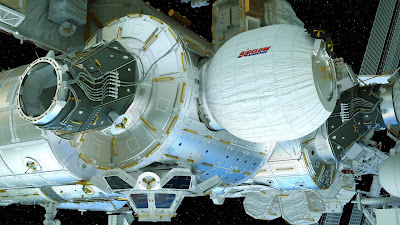The Bigelow Expandable Activity Module (BEAM) is an expandable habitat technology demonstration for the International Space Station. Expandable habitats greatly decrease the amount of transport volume for future space missions. These “expandables” require minimal payload volume on a rocket, but expand after being deployed in space to potentially provide a comfortable area for astronauts to live and work. They also provide a varying degree of protection from solar and cosmic radiation, space debris, atomic oxygen, ultraviolet radiation and other elements of the space environment.
The journey to Mars is complex and filled with challenges that NASA and its partners are continuously working to solve. Before sending the first astronauts to the Red Planet, several rockets filled with cargo and supplies will be deployed to await the crews’ arrival. Expandable modules, which are lower-mass and lower-volume systems than metal habitats, can increase the efficiency of cargo shipments, possibly reducing the number of launches needed and overall mission costs. [1]
Bigelow Aerospace founder Robert Bigelow‘s company makes in-space habitats. One (the BEAM adds 16 cubic meters of living area to the ISS) is now attached to the International Space Station and he and his company are developing permanent, stand-alone habitats to serve as private space stations in orbit around the Earth, ready to house private astronauts.
Bigelow has talked with United Launch Alliance Chief Executive Tory Bruno about using the company's Atlas V 552 rocket, which has an extra-wide payload fairing, to deliver the B330 into orbit.
United Launch Alliance is developing an advanced upper-stage vehicle, ACES, to provide in-space propulsion.
Two ACES in tandem could be used to move the B330 into a low lunar orbit. They orbit within 75 kilometers of the lunar surface.
Bigelow has spoken SpaceX President Gwynne Shotwell about using the company's Dragon 2 spacecraft to transport astronauts to the B330 in deep space.
By 2020, NASA and commercial astronauts could be living and working in lunar orbit inside a functional space station. [2]
1. NASA: Advanced Exploration Systems: Bigelow Expandable Activity Module2. Next Big Future: Bigelow Aerospace offers plan for an expandable space station orbiting the moon by 2020

Comments